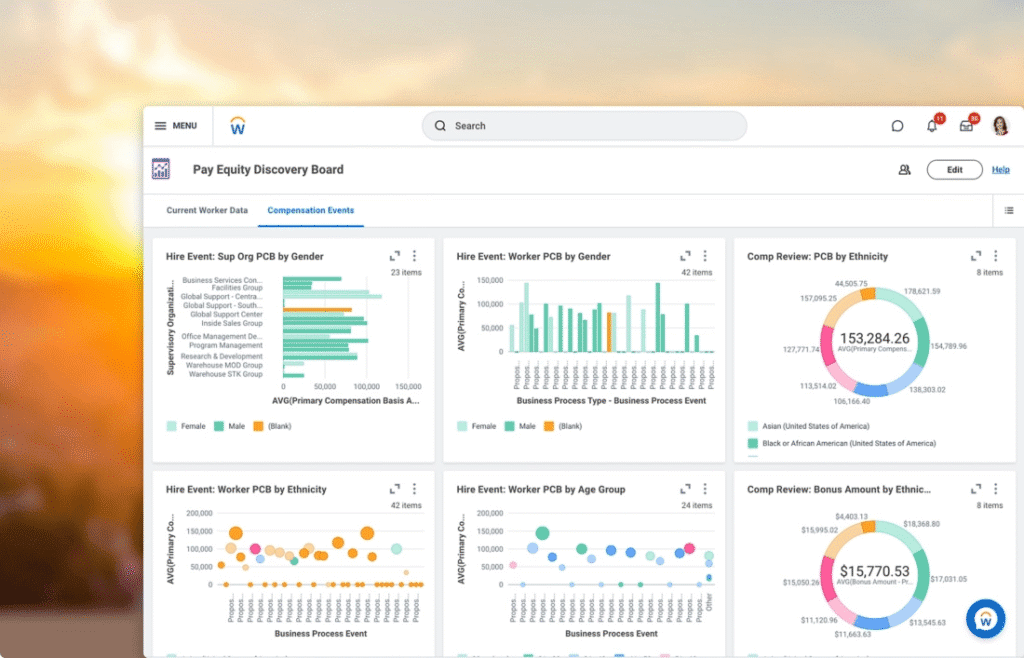From Reporting Headcount to Predicting Business Outcomes
For decades, the CHRO’s primary function was seen as administrative—a steward of policy, a reporter of headcount, and a manager of personnel costs. Today, the CEO and the board demand something entirely different. They see talent, skills, and culture as the primary drivers of business strategy, and they are asking the CHRO to prove it.
The challenge is no longer a lack of people data; it’s a lack of connected data. When your workforce plan lives in one system, your financial plan in another, and your employee sentiment data in a third, you can only report on what happened. You are unable to confidently predict what will happen. To be a true strategic partner, the CHRO must be able to directly connect people initiatives to business outcomes like margin, revenue, and risk.

The CHRO’s “Mission Control” Dashboard
Imagine logging in not to an “HR dashboard,” but to a “Business Dashboard.” This is the power of a unified Workday platform. It provides a single source of truth that blends people, finance, and operational data, allowing you to move from lagging indicators (like 90-day turnover) to leading indicators (like real-time flight risk for critical roles).
When your data is connected, you can finally move the needle on the metrics that define strategic success:
- Regrettable Turnover Rate: Proactively identify and retain top performers by correlating engagement, compensation, and performance data.
- Leadership Bench Strength: Get a real-time, objective view of succession-ready talent and skill gaps in your leadership pipeline.
- Time to Fill Critical Roles: Shorten hiring cycles by prioritizing roles that pose the greatest risk to revenue or operations.
- Employee Engagement & Sentiment: Move beyond the annual survey with real-time feedback, spotting burnout or disengagement by department before it leads to turnover.
- Diversity Representation by Level: Track and model the impact of DEI initiatives on promotion, hiring, and retention across the entire enterprise.
Connecting the Enterprise (People-to-Profit)
This strategic-level insight is only possible when the platform’s modules work together. Workday connects the entire enterprise to give the CHRO a complete picture:
- Workday HCM (Core): This is the foundation—the single source of truth for all worker data, organizational structures, compensation, and talent information.
- Workday Skills Cloud: This AI-driven engine provides an objective, scalable view of the skills your organization has versus the skills it needs to execute its business strategy.
- Workday Adaptive Planning: This is the critical bridge to finance. It allows you to model workforce plans (new hires, retention strategies, location changes) directly alongside the enterprise financial plan to see the P&L impact instantly.
- Workday Peakon Employee Voice: This tool provides real-time, actionable data on employee engagement, sentiment, and flight risk, turning a lagging indicator into a powerful, predictive tool for talent retention.
Conclusion: The Confident People Strategy
A fully leveraged Workday platform removes the guesswork. It empowers the CHRO to move from being a recipient of the business strategy to being a co-creator of it.
When the board asks, “If we open a new division, can we staff it, what skills are we missing, and what will it cost?” you will have a confident, data-backed answer. When the CEO asks, “Are we at risk of losing top talent in our R&D unit?” you can show the real-time engagement data and the succession plan. This is the new standard for the outcome-driven CHRO.
Take the Next Step
Is your Workday environment providing true strategic insight, or just faster reports? Teamup9 helps CHROs bridge the gap between data and decision, ensuring your Workday platform powers enterprise-wide agility.
Would you like to see how we can help you build your CHRO “Mission Control” dashboard?


